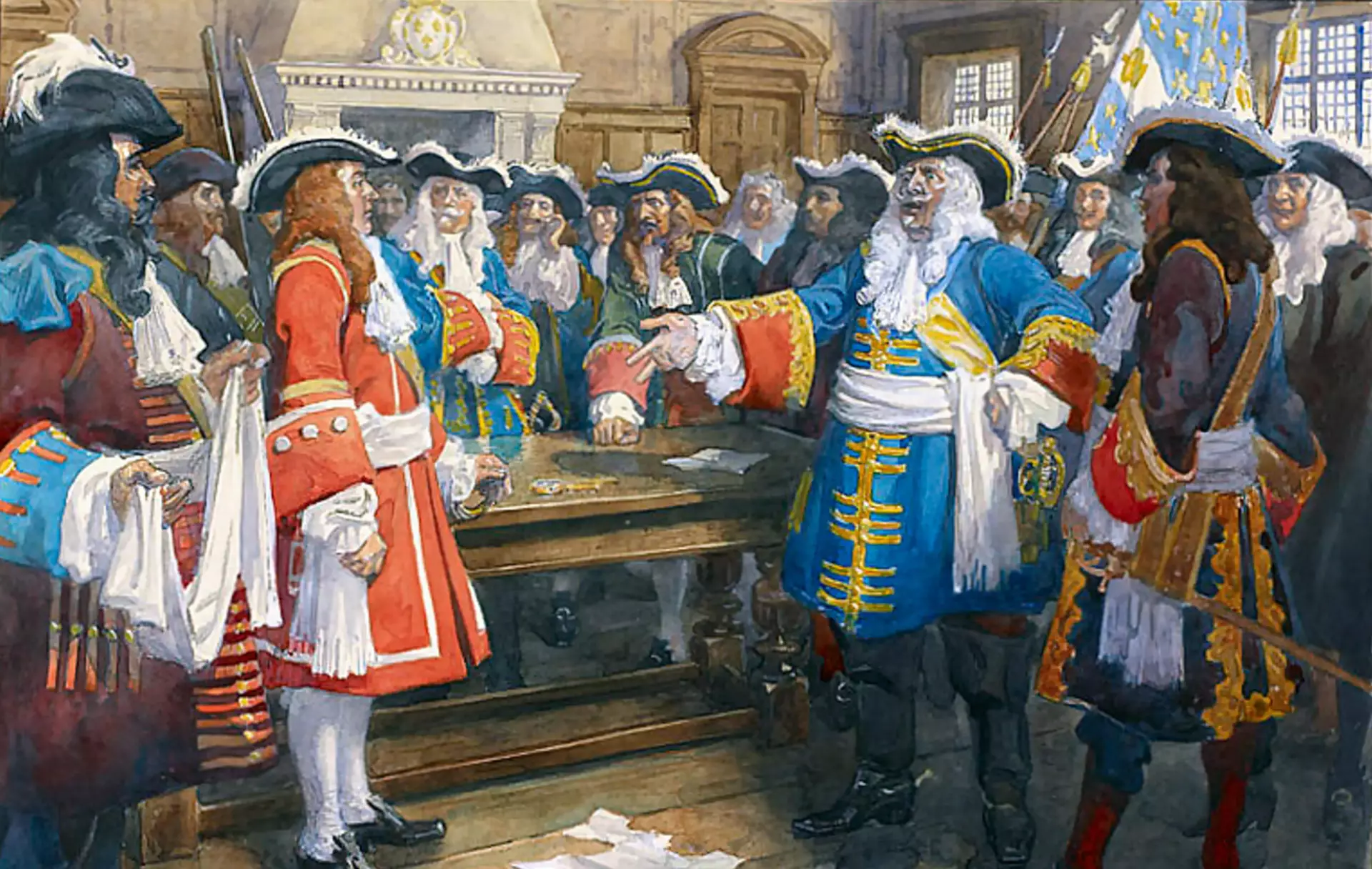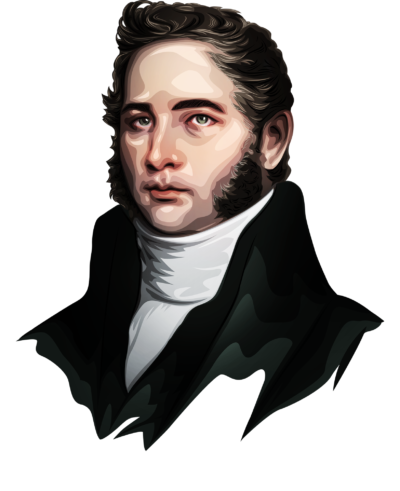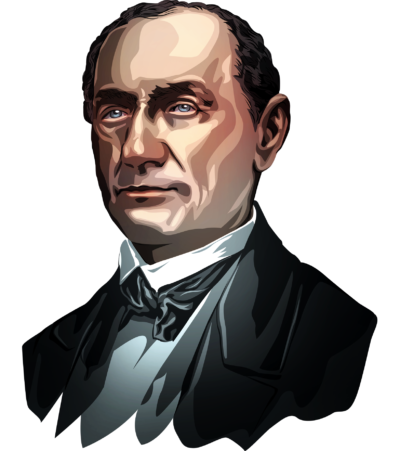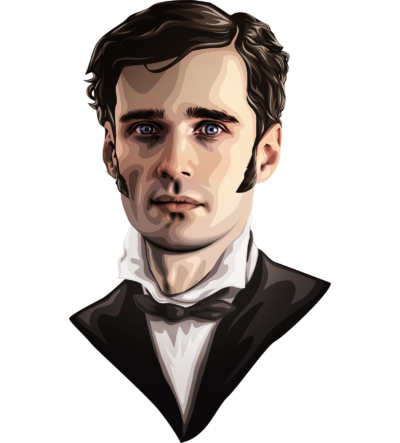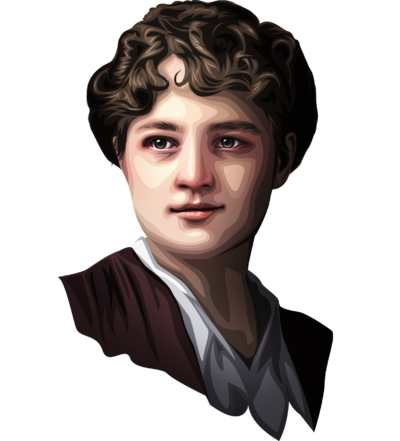The philanthropist
Justine Lacoste
The one with thousands of children


Justine Lacoste, from a bourgeois family, had her path cut out for her: marry well, shine in high society and start a family. She married the man of her dreams, Louis de Gaspé Beaubien, and had it all . . . except her own children.
Nature may have denied her that privilege, but this determined woman made up for it one hundredfold.
A young upper-class woman

Family of Sir Alexandre Lacoste and Marie-Louise Globensky known as “Lady Lacoste”. Landry Family fonds, 1900.
Born in Montreal on October 1, 1877, Marie-Élodie-Justine Lacoste grew up in a big family (seven girls and three boys) at a time when society was promoting the education of young women.
She was named after Saint Justina of Padua, a martyr in the early days of the Catholic Church and protector of sick children.
When Justine’s older sister, Marie, was gravely ill, her parents prayed to Saint Justina and asked her to intercede, promising to name their next daughter after her.

Saint Justina of Padua. Bartolomeo Montagna, ca. 1490.
Her father, Sir Alexandre Lacoste, was a prominent lawyer and later a senator and Chief Justice of Quebec.
Her mother, Lady Lacoste, née Marie-Louise Globensky, was a renowned philanthropist in Montreal.
Her motto:

Portrait of Marie-Louise Globensky known as “Lady Lacoste”. G.C. Arless, ca. 1880-1891.

Portrait of Sir Alexandre Lacoste. Landry Family fonds, 1900.

A good education
Although life seemed carefree in the wealthy homes of Montreal’s upper classes, Justine and her sisters received a strict education. Justine attended a boarding school where the Christian values of sharing and sacrifice were paramount.
Saint-Nom-de-Marie Boarding School, Hochelaga, Montréal. A. Breger frères, ca. 1910-1919.

Justine Lacoste and her sister, Jeanne Lacoste. Chs. Desautels, 1895.
A perfect life
Justine was 22 years old when she married Louis de Gaspé Beaubien, ten years her senior and the founder of the L. de G. Beaubien brokerage firm, which he ran for 50 years.

Marriage Certificate of Louis de Gaspé Beaubien and Justine Lacoste. Quebec Register of Civil Status, 1899.

Vacations at Lake Nominingue in the Laurentians. 1903.
Justine Lacoste, now Madame Beaubien, was adored, pampered and happy. She accompanied her husband on his business trips to Europe, and life was a series of unforgettable crossings, wide horizons, big cities and high-society events. Everything was perfect, except for one thing: infertility.

Justine Lacoste. Landry Family fonds, ca. 1900.
SIGHTS SET
ON EUROPE!
Louis de Gaspé Beaubien dreamed big. In March 1911, the businessman travelled to France with Justine to prepare for the opening of L. G. Beaubien & Cie’s offices in Paris, located at 5 Square de l’Opéra. From this base, the company would serve the markets of France, Belgium, Luxembourg and the Netherlands.

Louis de Gaspé Beaubien. Pelletier, 1935.
Justine’s mission
Around 1905, Justine met Irma LeVasseur, the first French Canadian woman to graduate in medicine. In Montreal at the time, many children were abandoned at birth. To make things worse, hospitals refused to provide care to children under the age of two years. The young woman, who was the same age as Justine, wanted to open a children’s hospital.

Sainte-Justine Hospital Located on Saint-Denis Street, near Roy Street. ca. 1907.
Everything fell into place. Justine, the gifted administrator and world traveller who had witnessed human suffering; the lady with a vast social network; the wife of a financier glad to lend his support; the woman who wished she could have been a mother . . . the project was a perfect fit and would become her life’s mission.

Sainte-Justine Hospital for Children. Laprès & Lavergne, ca. 1908.

A nurse and two nuns from the Daughters of Wisdom. Conrad Poirier, 1946.
She would leave her mark on the society at the time. A powerful speaker with a permanent smile, she was tireless and convincing. She set an excellent example, encouraging the powerful to take action and the wealthiest to give more generously. The result was conclusive. With Hôpital Sainte-Justine, she achieved her goal. Generations of children would be sheltered and cared for.
Justine’s children.
THE LEGACY
L. G. Beaubien’s company long outlived its founder. In the early 1960s, renowned businessman Jean-Louis Lévesque bought it and merged both companies under the name of Lévesque, Beaubien Inc. In 1989, the National Bank purchased the company and it became National Bank Financial.

Oil portrait of Louis de Gaspé Beaubien. Louise Gadbois, 1939.
Twenty years prior, she had purchased a vast piece of land located near the Université de Montréal and her home. In 1957, with public and private support, an ultra-modern 860-bed hospital was inaugurated at 3175 Chemin de la Côte-Sainte-Catherine. Hôpital Sainte-Justine has become a symbol of excellence and a place of comfort for the families of sick children in Quebec.

CHU Sainte-Justine. 2020.

Model of the fourth Sainte-Justine hospital seen from a bird's eye view. Héritage Montréal, n.d.

Sainte-Justine Hospital. Lemay, Consortium: Jodoin Lamarre Pratte architecte, Lemay, BGLA, DMG, 2008.

Justine Lacoste had one goal in mind: to found a refuge for Montreal’s abandoned and sick children. An outstanding administrator, she succeeded in creating one of Montreal’s most important institutions.

